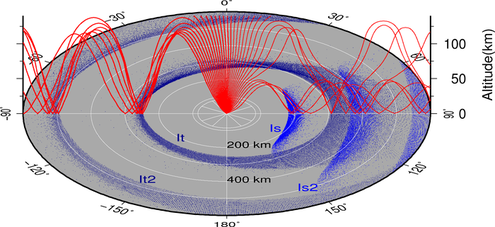Monitoring the atmosphere and oceans with infrasound
Low frequency sound waves in the atmosphere are called infrasound and have a frequency lower than 20 Hz, i.e., the human hearing threshold. Waves with such long periods are generated by large sources. Infrasound was discovered after the eruption of the Krakatoa in 1883, where sound waves were found to have traveled four times around the globe. In the nuclear test era, infrasound detections were used to get insights in the nuclear capabilities of nations. Infrasound was chosen as a verification technique for the Comprehensive Nuclear-Test-Ban Treaty that opened for signature in 1996. Sources like: meteors, volcanoes, avalanches, military activity and explosions are routinely detected by global and regional networks. But next to source identification, infrasound can also be used to probe the (upper) atmosphere where in-situ measurements are rare and our knowledge on wind and temperature mostly depends on model outputs. The atmospheric ambient noise field mainly consists of microbaroms, which are the result of a non-linear interaction of oceanic waves. Similarly, the earth ambient noise field consists of microseisms, which originate from the same interaction of oceanic waves. Both microseisms and microbaroms have a typical frequency of 0.2 Hz and travel over enormous ranges since they are hardly attenuated. Specific sources, like volcanoes, can be used to retrieve the wind and temperature fields of the stratosphere, mesosphere and thermosphere up to an altitude of 120 km. Alternatively, the ambient noise field can be used in an interferometric approach to reach the same goal, without being dependent on a specific source.

Infrasound propagation through the dynamic atmosphere. A strong eastward wind around the stratopause (at 50 km alt.) refracts infrasound back the the earth's surface. Infrasound is also refracted in the thermosphere (at 120 km alt.). The footprint on the earth's surface is continuously changing as a function of time and geographical location and thus contains information on the upper atmospheric wind and temperature structure.